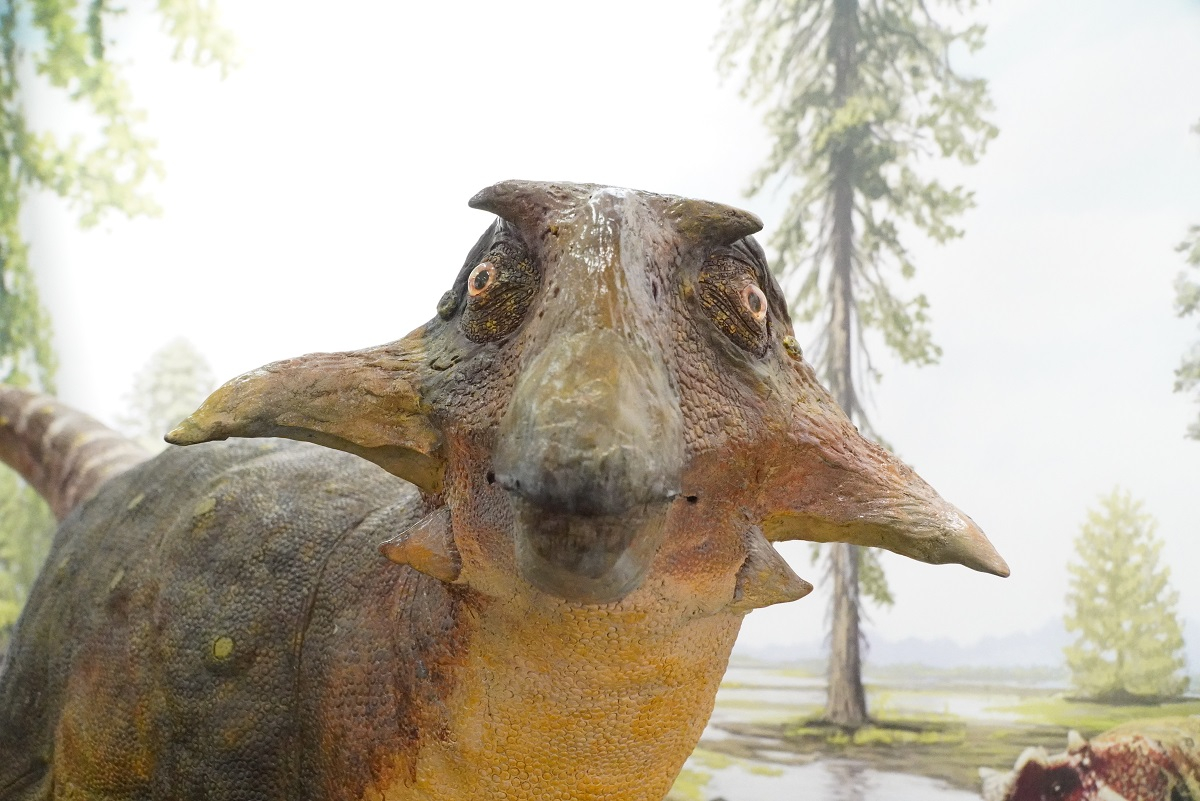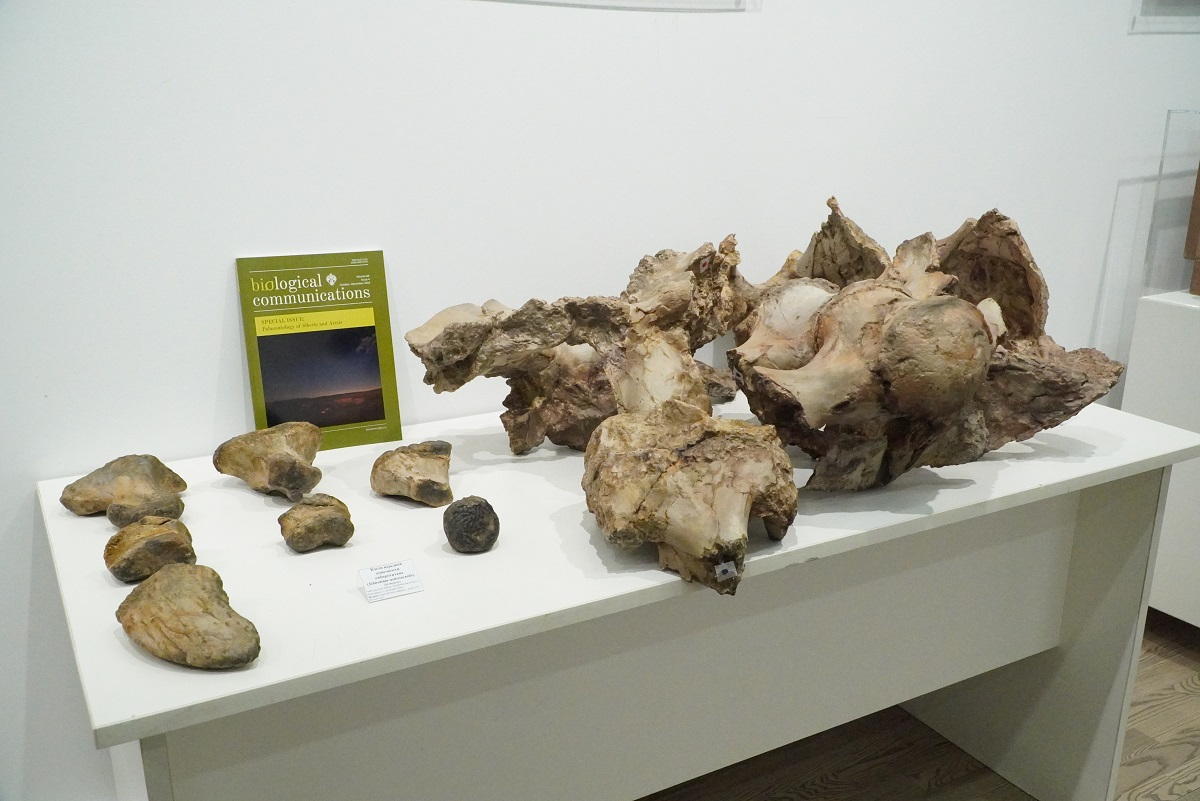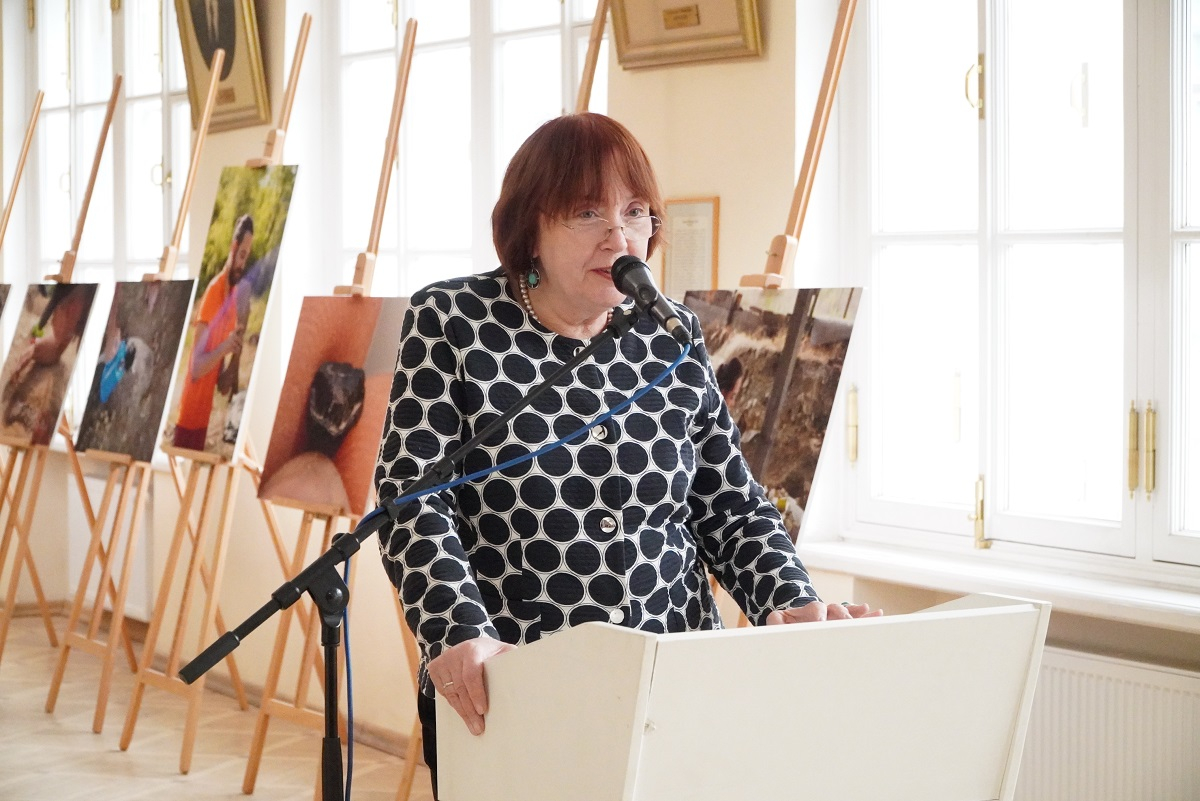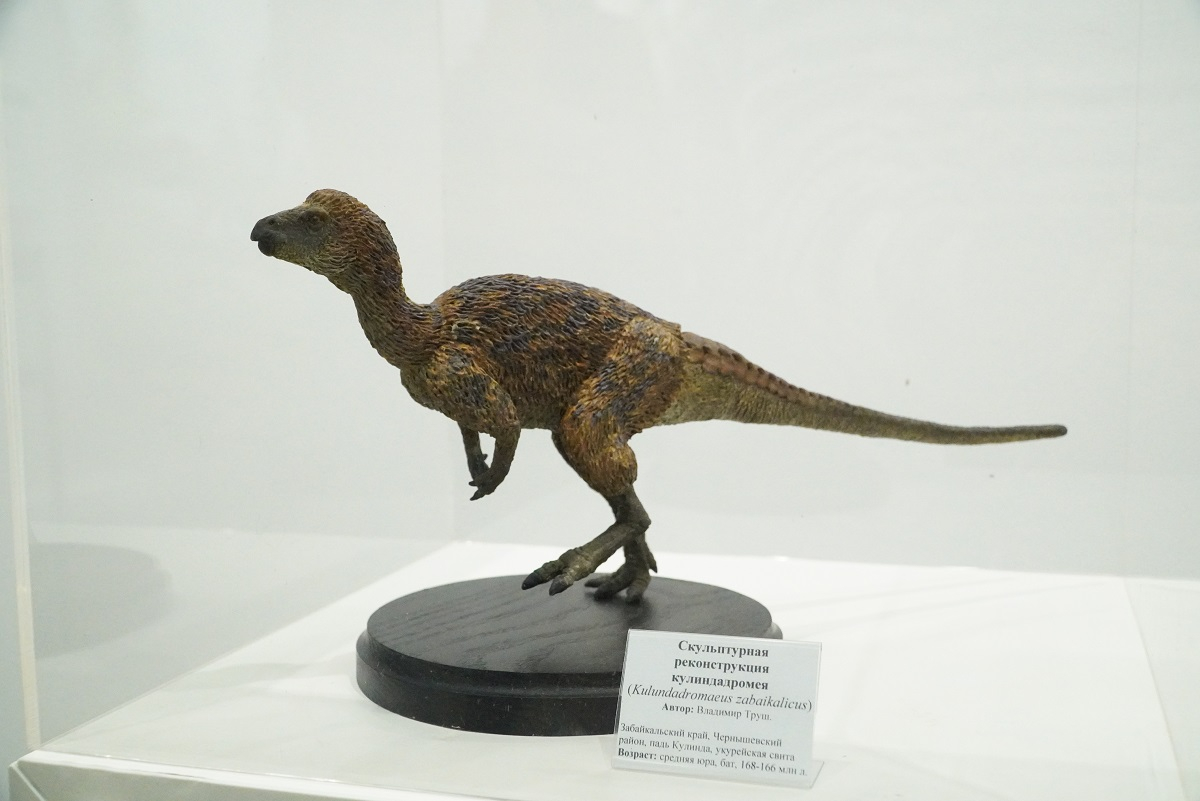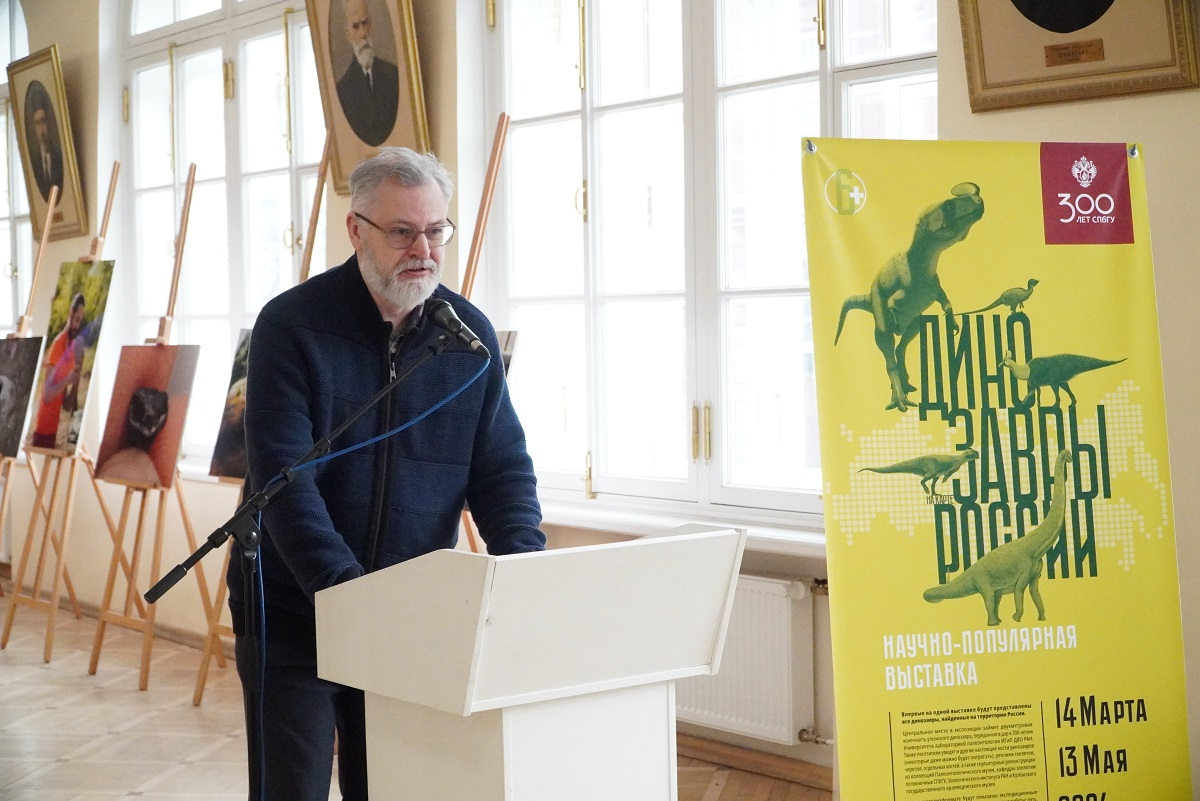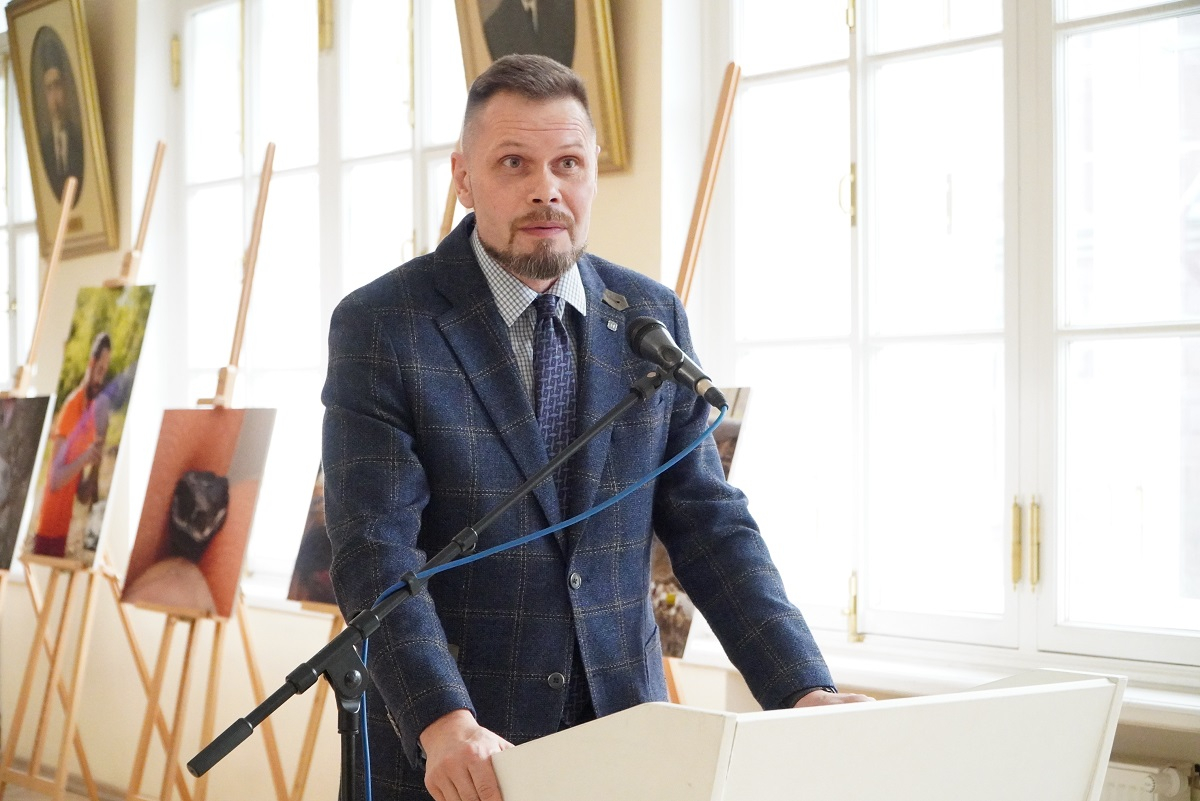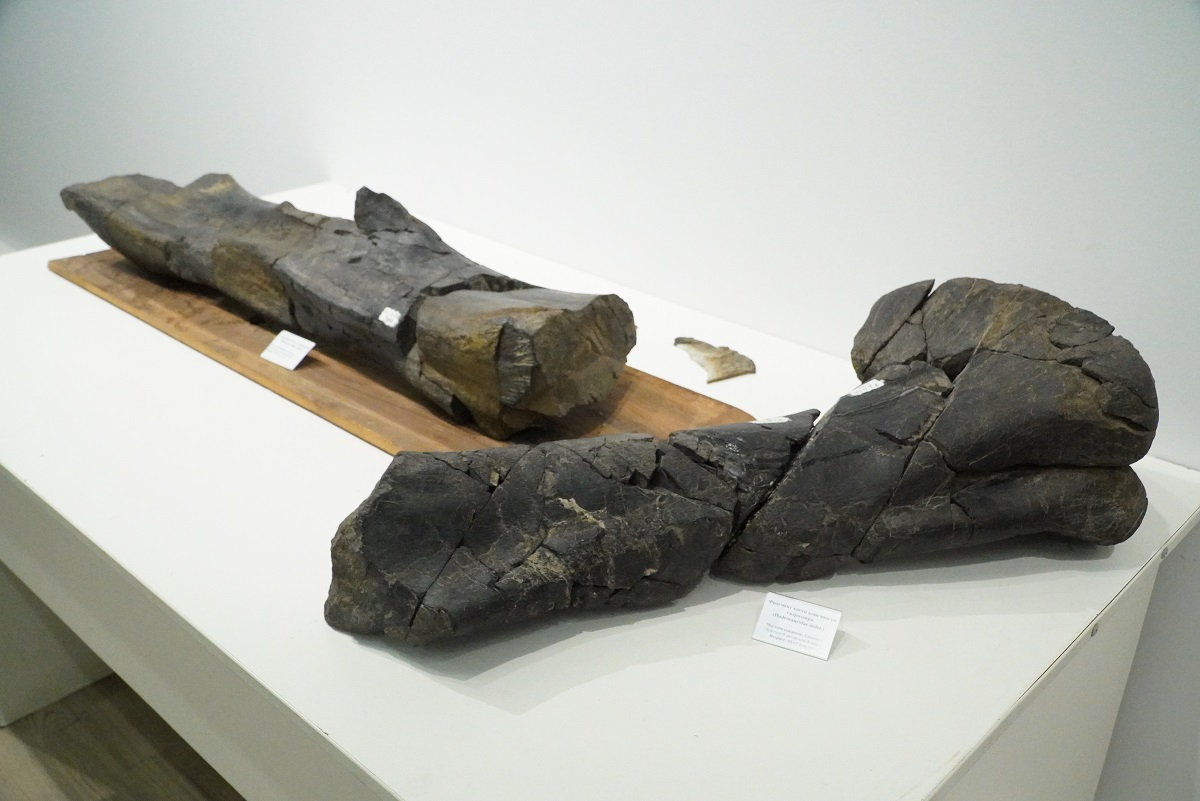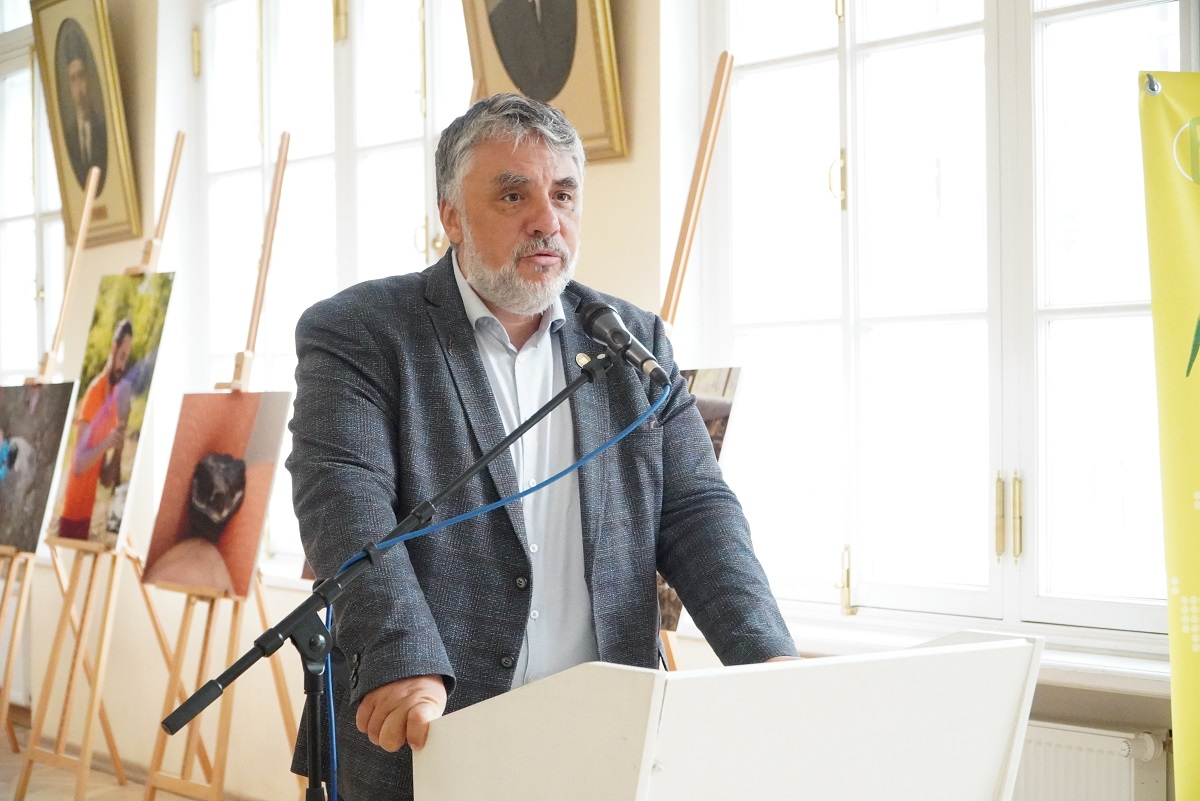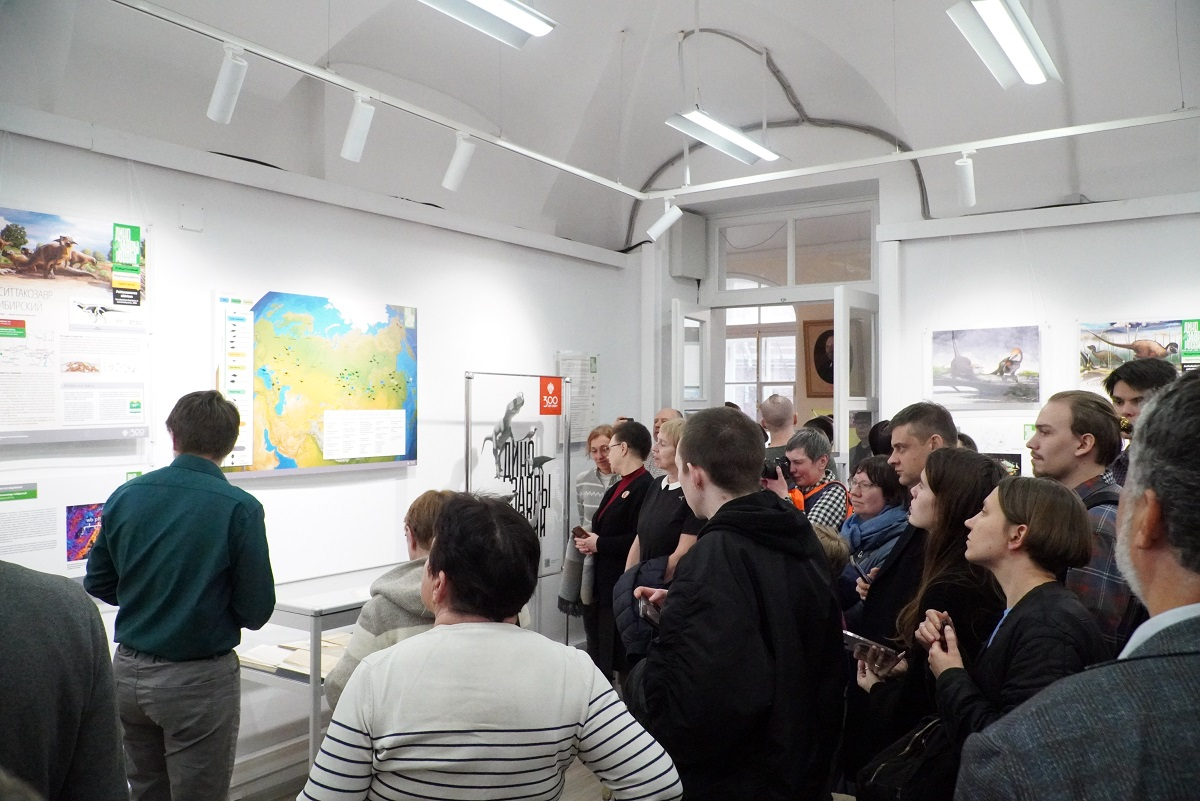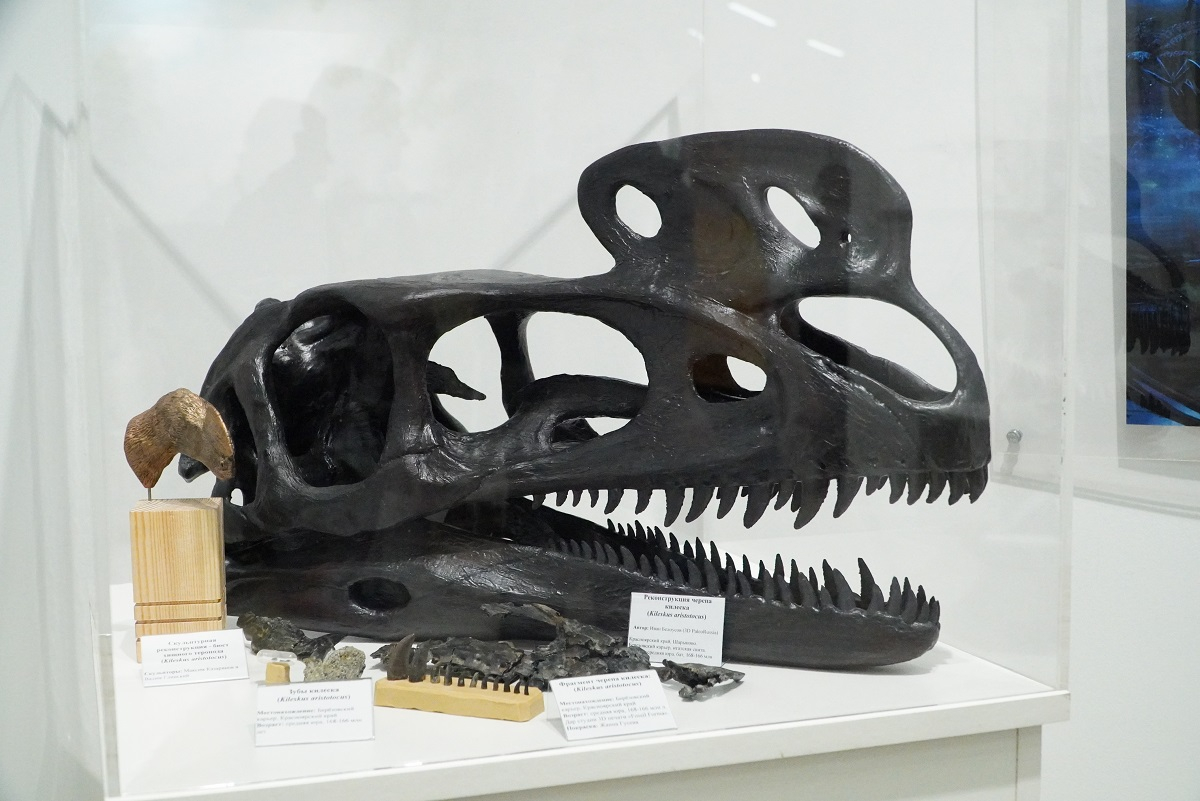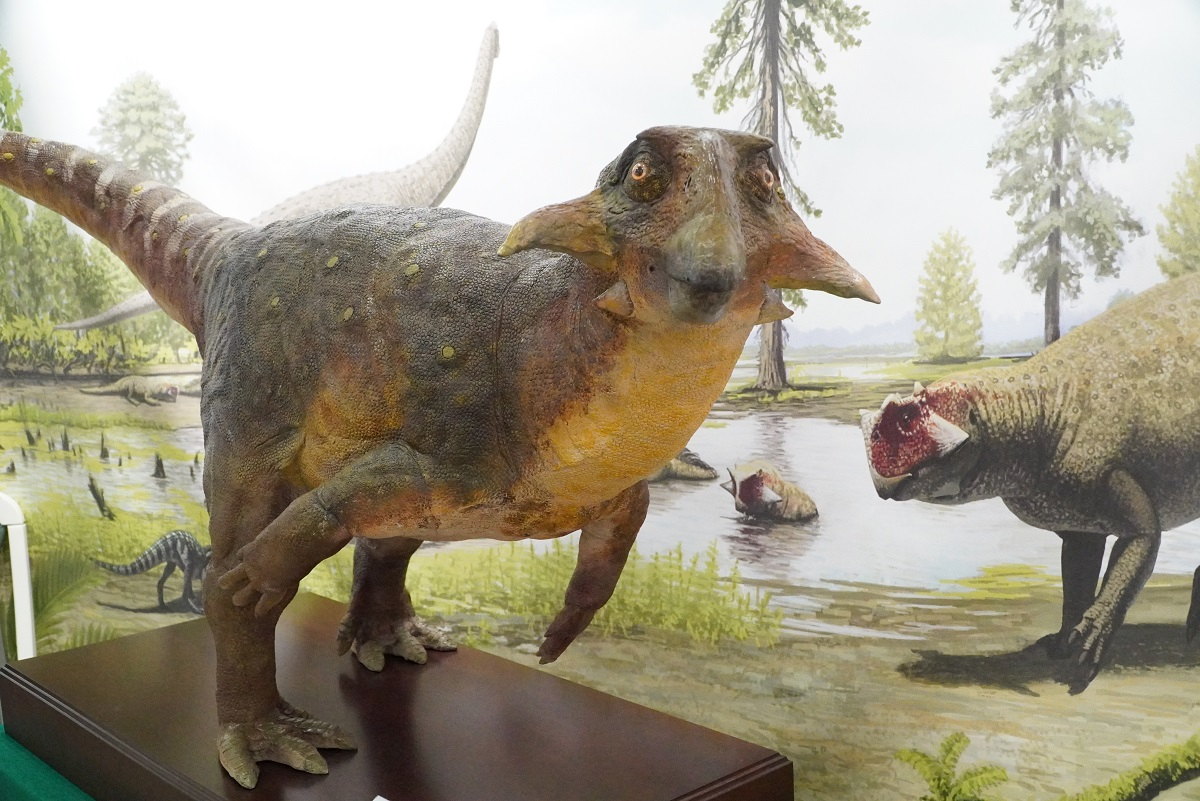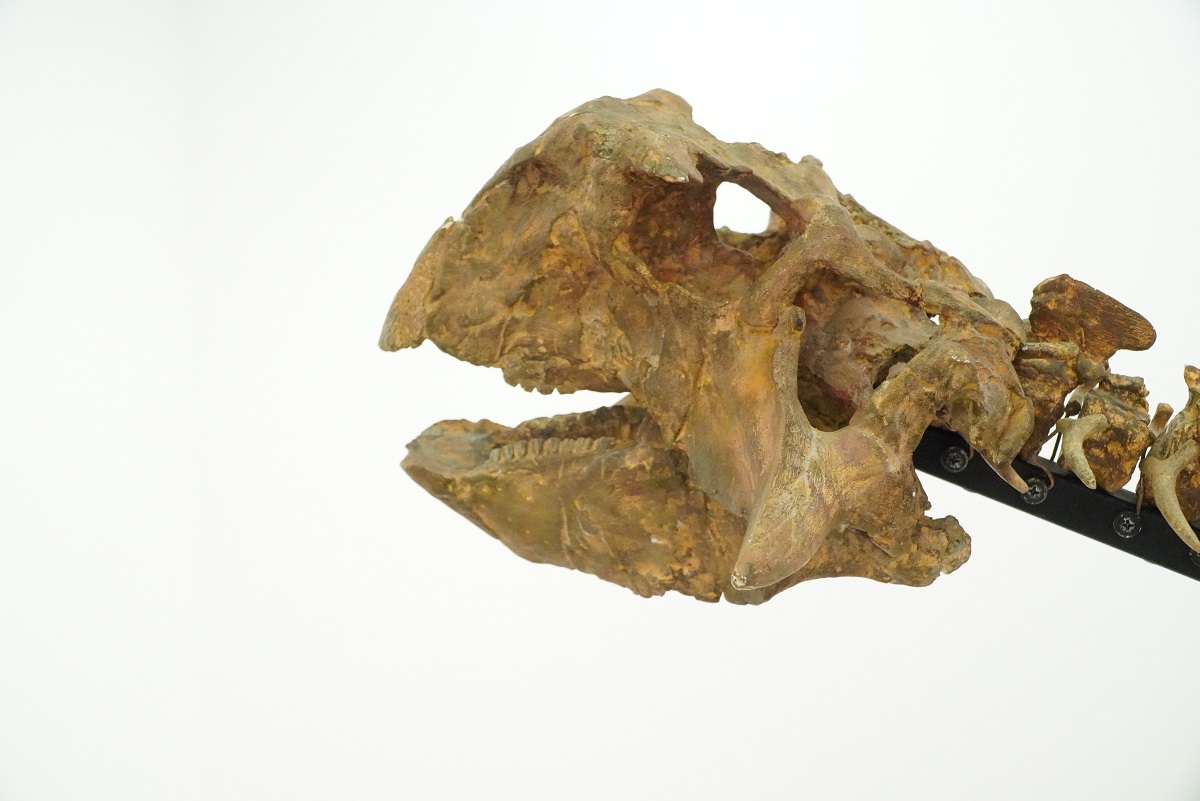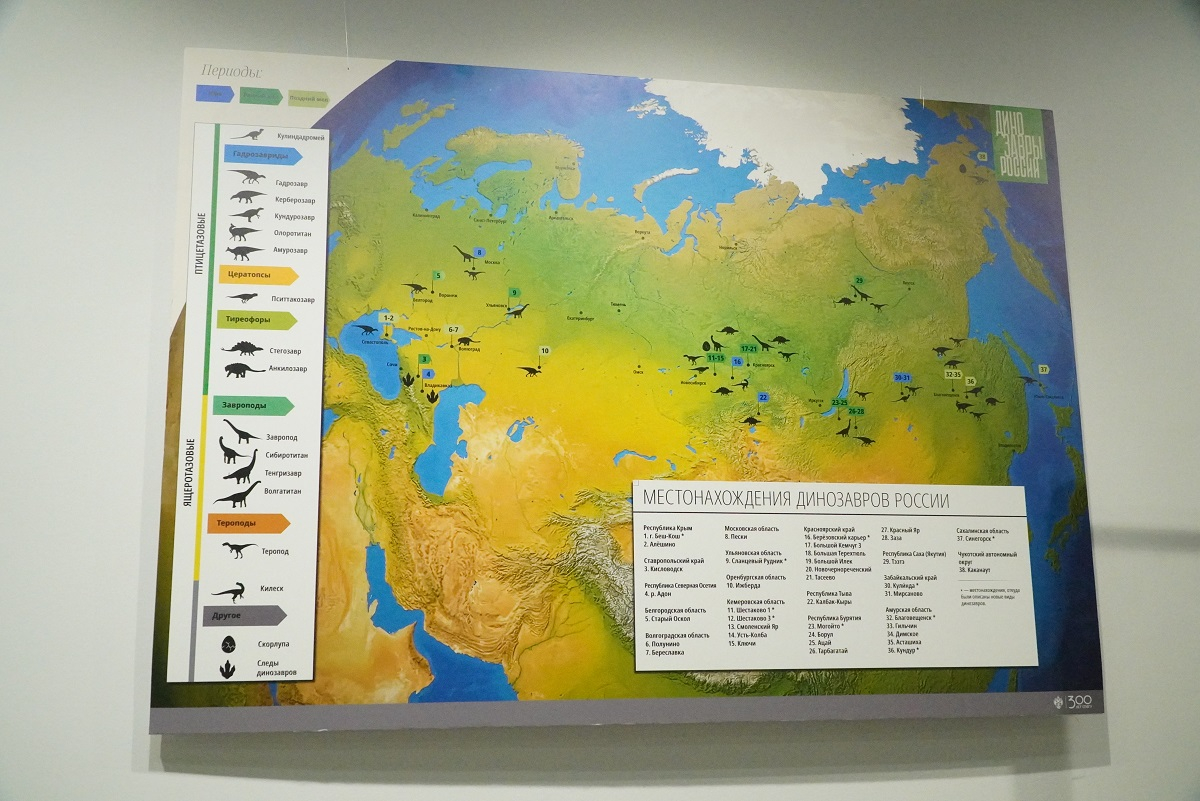Visitors to the exhibition hosted at St Petersburg University to see all the dinosaur fossils found in Russia
The popular science exhibition "Dinosaurs of Russia" has opened in the exhibition hall of the Twelve Collegia building at St Petersburg University. Exhibition visitors will be offered the opportunity to see real bones of ancient lizards found in different regions across Russia, replicas of individual bones, sculptures and 3D models, which will help to form a clear picture of the prehistoric fauna of our country.
The exhibition is organised jointly with the Institute of Geology and Nature Management at the Far Eastern Branch of the Russian Academy of Sciences, the Kemerovo Regional Museum of Local History and the Zoological Institute of the Russian Academy of Sciences. The centrepiece of the exhibition is a two-metre long limb bone of an Amurosaurus, or a duck-billed dinosaur, donated by the Laboratory of Palaeontology at the Institute of Geology and Nature Management at the Far Eastern Branch of the Russian Academy of Sciences as a gift for the 300th anniversary of St Petersburg University. The dinosaur limb is mounted in an upright position and supplemented with 3D-printed bones.
For the first time, all the dinosaur fossils found in Russia will be presented in one exhibition.
"The dinosaurs of Russia, like the snakes of Ireland, are remarkable only because they are non-existent,’ said one of the leading palaeontologists of the 19th century, Othniel Charles Marsh. Two centuries later, however, we can definitely refute those assertions. Today, using modern research methods, palaeontologists are not just discovering new dinosaur localities in Russia, but are also increasing their accessibility," Elena Chernova, Senior Vice-Rector of St Petersburg University, said at the opening ceremony.
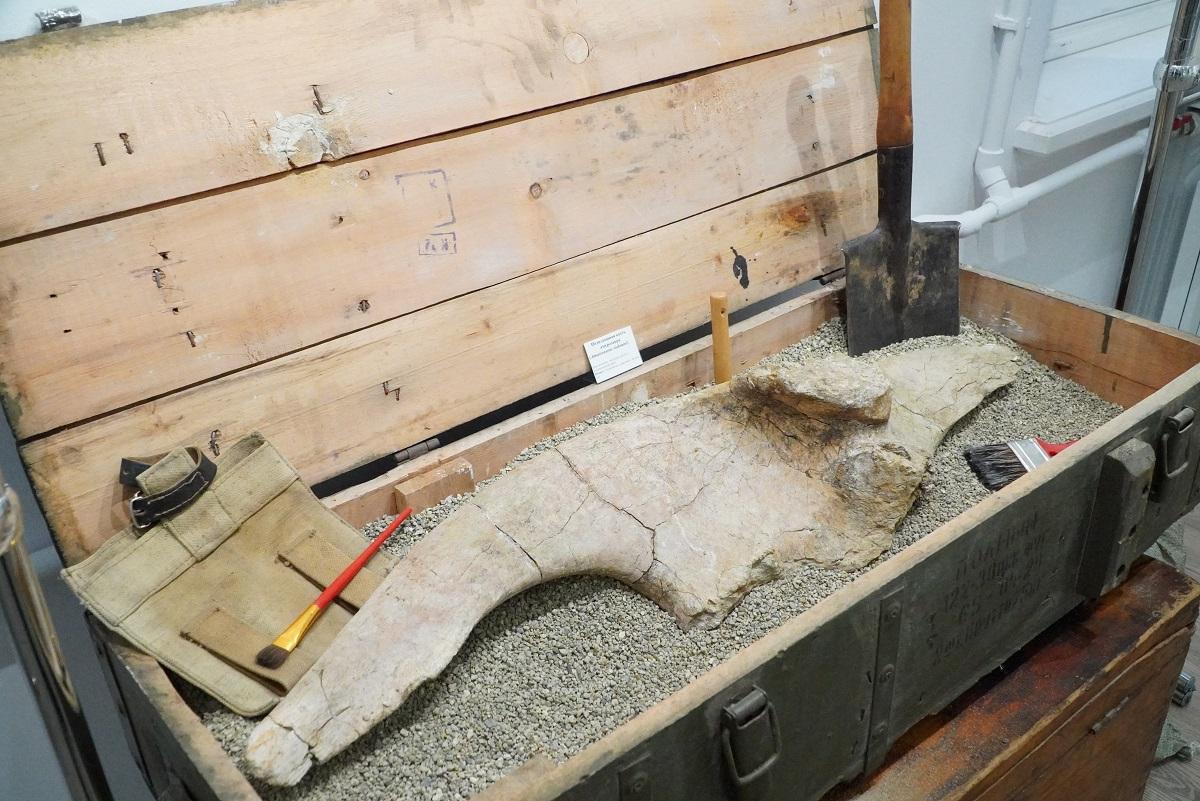
'Here in Russia, we have a wealth of talent. Our land is rich not only in mineral deposits, but also in dinosaur fossils. In its 300th anniversary year, St Petersburg University, with the support of partners, is holding the exhibition "Dinosaurs of Russia". You will have the opportunity to learn about the palaeontological fieldwork and excavations; how the dinosaur fossils were found and collected; and see individual bones and models of skulls of two dinosaur species found in Russia that were restored using 3D printing technology,' said Elena Chernova. 'And thanks to a generous gift from the Institute of Geology and Nature Management of the Far Eastern Branch of the Russian Academy of Sciences, St Petersburg University has now got dinosaur remains in its collection.'
The exhibition will run until 13 May 2024. You can visit it at: 7-9 Universitetskaya Embankment, Exhibition Hall of the Twelve Collegia building.
Olga Vladimirova, Acting Director of the Kemerovo Regional Museum of Local History, said that excavations at the Shestakovo locality have been conducted since 2014 when the museum received a licence for fossil collection and palaeontology research. It was then that the first unique specimens were found, including the remains of Psittacosaurus sibiricus. That enabled the experts to assemble a complete full skeleton of this dinosaur. Visitors to the exhibition at St Petersburg University will be able to see a 3D replica of the Psittacosaurus skeleton.
'We have been collaborating with St Petersburg University since 2019, when we signed a cooperation agreement and an agreement on palaeontological fieldwork placements. Now, academics and students from St Petersburg University work together with our expedition team and participate in research and scientific symposia,' said Olga Vladimirova. 'Furthermore, since 2022, the Shestakovo site has been hosting the International Popular Science Festival "Dinoterra", which attracted 64,000 visitors last year. We have set ourselves an ambitious goal: to make the name of Kuzbass associated not only with coal mining, but also with dinosaurs. Of course, a single decade is not long enough to achieve such a goal. Nonetheless, a large number of people know about it already.'
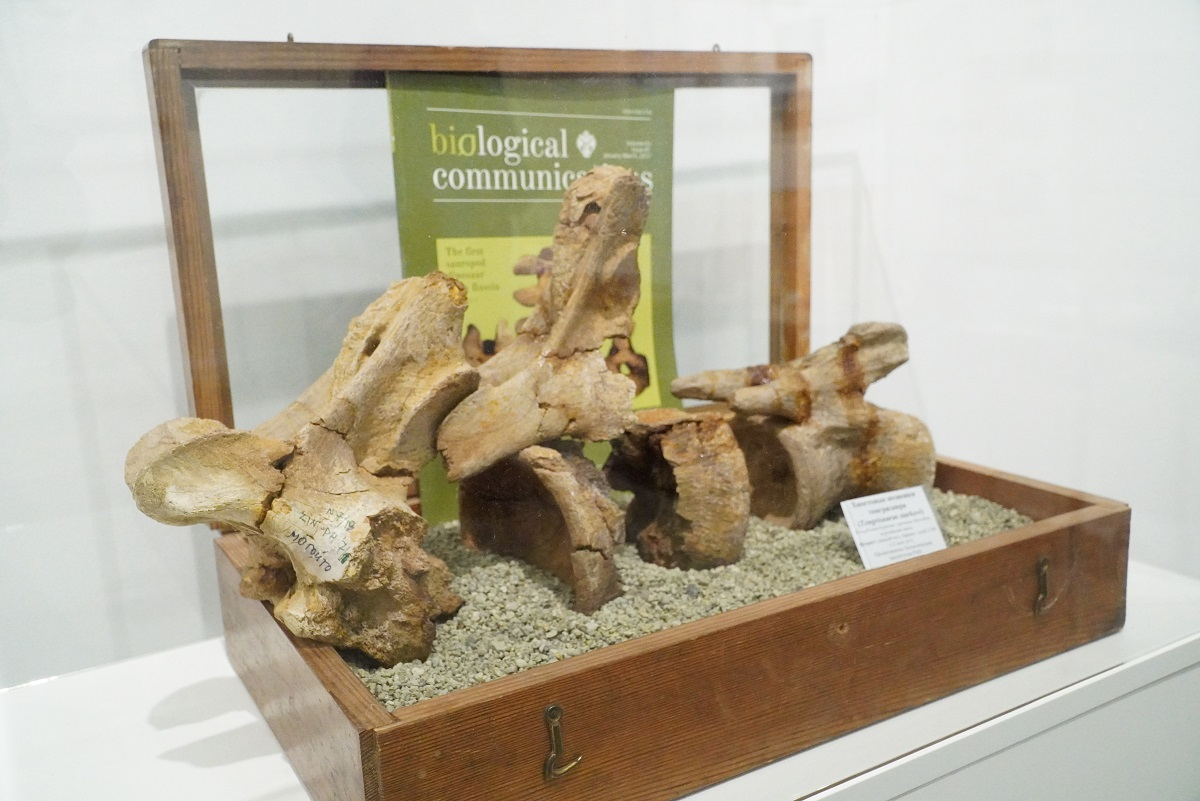
The study of dinosaurs began in England in the first half of the 19th century, when this country was undergoing an industrial revolution, said Alexander Averianov, Chief Research Associate in the Laboratory of Theriology of the Zoological Institute of the Russian Academy of Sciences. Fossilised bones and sometimes even full skeletons of ancient animals were found in quarries across the UK, but by now those localities have been long exhausted. The next place where excavations were actively conducted was North America. There, the study of dinosaur fossils was associated with the development of the Wild West. And although today those sites still hold great potential, major discoveries cannot be expected there.
"Compared to the sites in Northern America, the territory of Russia presents a wide range of opportunities. This is a vast blank space where anything can be found," Alexander Averianov emphasised. "Twenty years ago, it was only the Blagoveshchensk locality where dinosaur fossils were found, while now there are 35 such sites. New dinosaur taxa and faunas can be discovered there. This offers a host of opportunities, where early-career researchers and students can invest their efforts and energy. There is enough work for everyone. This year alone, three new dinosaur species discovered in Russia are to be described."
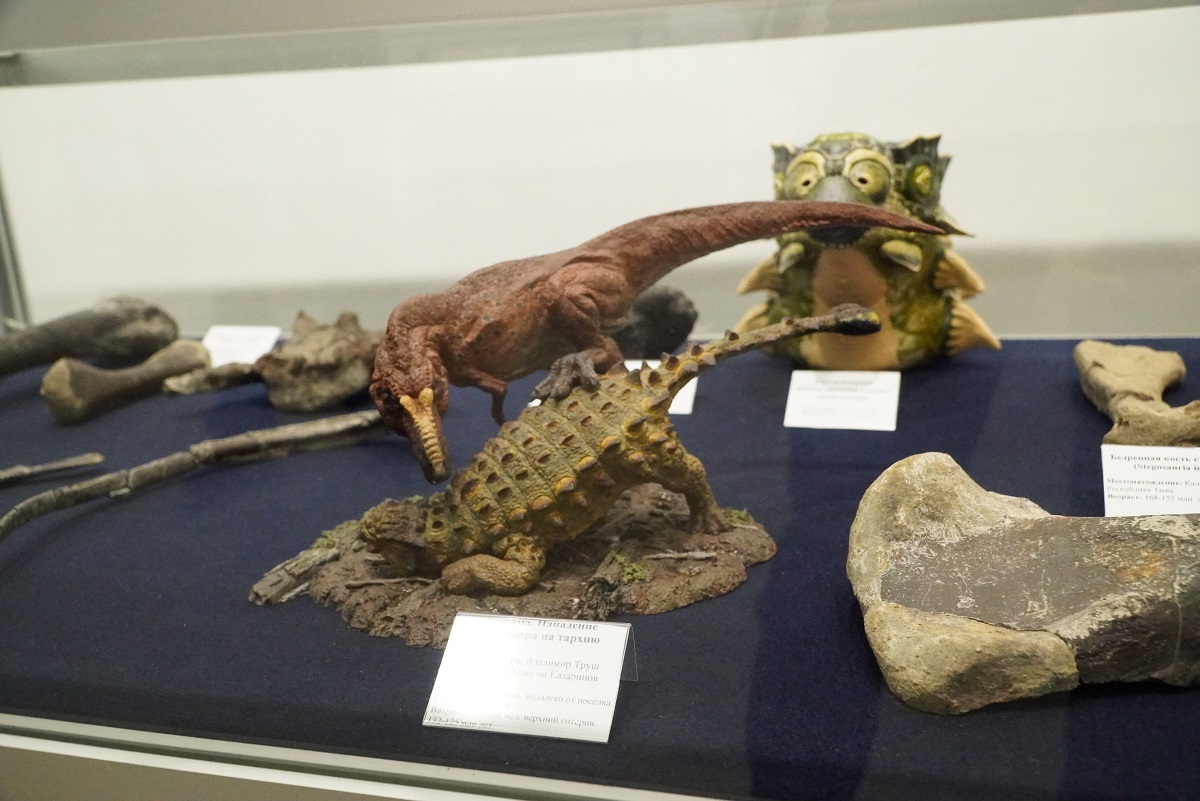
According to Ivan Bolotsky, Research Associate in the Laboratory of Palaeontology at the Institute of Geology and Nature Management at the Far Eastern Branch of the Russian Academy of Sciences, the popular science exhibitions facilitate the dissemination of palaeontological research findings to the widest possible audience.
"Dinosaurs have long become not just a serious scientific but also a cultural phenomenon. It is largely due to this fact that we have a whole generation of researchers in our country who are interested in studying dinosaurs in one way or another and contribute to the development of palaeontology in general and dinosaur research in particular," stressed Ivan Bolotsky. "These are world-renowned scientists and early-career researchers, designers, IT specialists, sculptors, and artists — a whole group of people who are instrumental in achieving this goal." Dmitry Grigoriev, Head of the Palaeontology Museum at St Petersburg University, drew the attention to the fact that many scholars contributed their efforts so that visitors can see these unique exhibits presented at the exhibition.
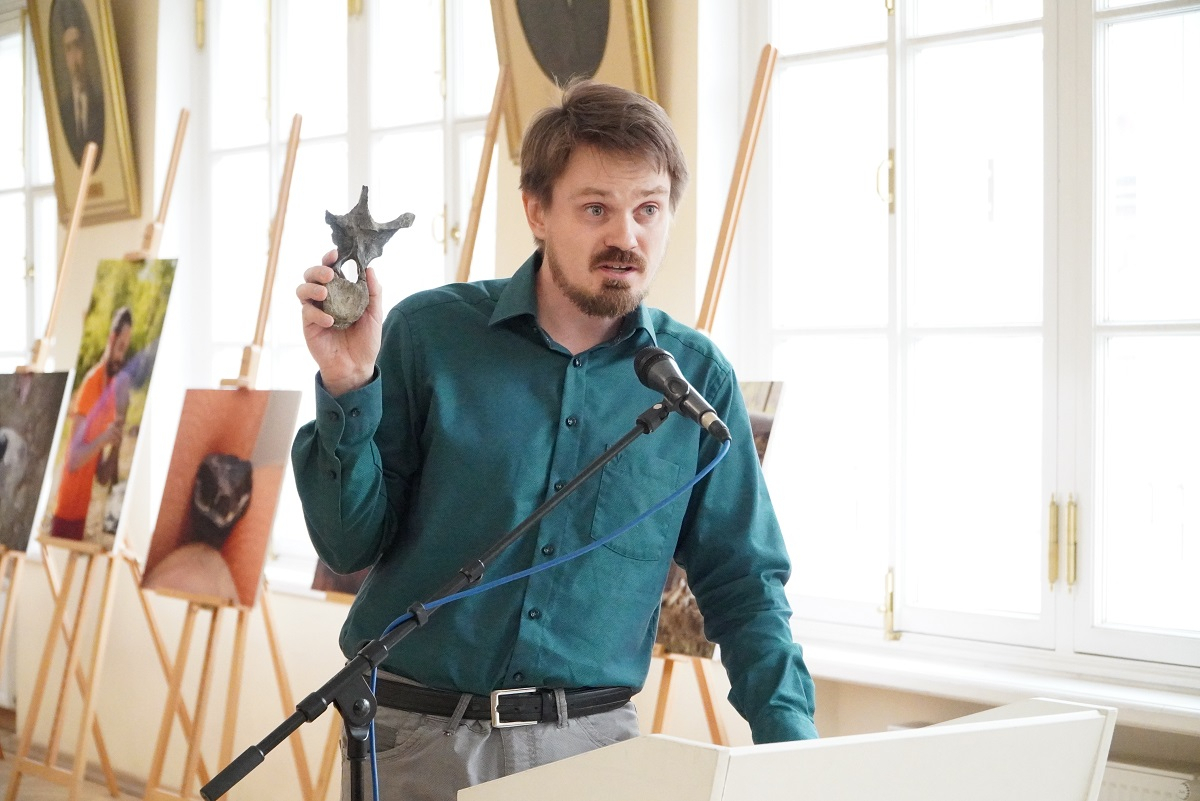
"I am holding a bone of a stegosaur. It travelled a long way to get here. For millions of years, it lay buried in sedimentary rock layers, until finally it was unearthed by geologists in an excavation site in Yakutia. Then for many years, Petr Kolosov worked on the site together with school students. To get to the site, they had to travel on horseback for several days. That is how a significant collection of dinosaur bones was gathered, which is now kept in a local school," said Dmitry Grigoriev. "Ten years later, an expedition team from St Petersburg University, led by Professor Pavel Skutschas, continued fieldwork in that locality. We covered 5,000 kilometres by plane, travelled for about a day to the village of Kiukei and then for two more days to the site itself on an all-terrain vehicle. We worked there in all weathers, removing rock layer by layer, until we finally found this vertebra. Our findings were reported in research papers, thanks to which the dinosaurs found in Yakutia are now known to the whole world."
It is very important to remember that there is a story behind every discovery. There are people without whom that discovery would not have happened.
Dmitry Grigoriev, Head of the Palaeontology Museum at St Petersburg University
Professor Pavel Skutschas, Acting Head of the Department of Vertebrate Zoology at St Petersburg University, Chief Research Associate at the Zoological Institute of the Russian Academy of Sciences, noted that the preparatory stage for the exhibition "Dinosaurs of Russia" was a unique project that united scholars from all over the country and palaeoartists and sculptors, both professionals and amateurs. "The primary purpose of this exhibition is to teach children. I am sure that school students who will attend this exhibition will succeed us in future. I hope that palaeontology at St Petersburg University will continue to develop and the Palaeontology Museum at St Petersburg University will have a scientific department where early-career researchers can work," shared Professor Skutschas. "The future of palaeontology is being created in the here and now."
Attendees of the event were also addressed by Elena Lebedkina, Head of the Main Department for Exhibitions, Museum, Library and Publishing Activities at St Petersburg University, and Nikita Chernetsov, Director of the Zoological Institute of the Russian Academy of Sciences.
In parallel, the Diaghilev Museum of Modern Art at St Petersburg University will host the exhibition "Dinosaur’s Leg", featuring works by more than 25 contemporary palaeoartists and sculptors exploring the theme of the prehistoric world and dinosaurs.


